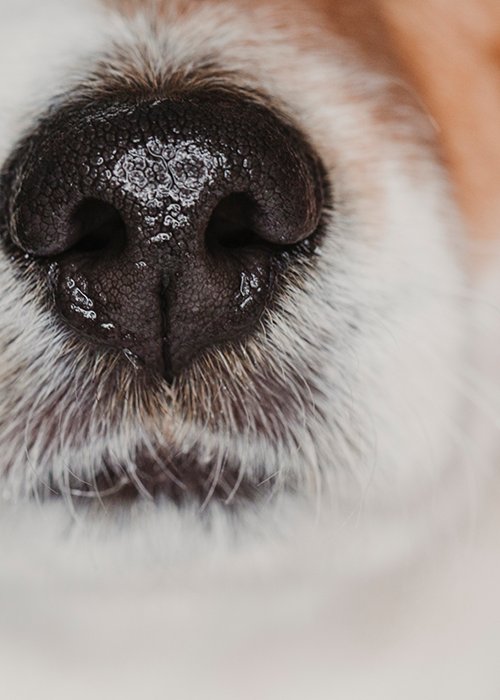They’ve always been special, unique. Our friendship is one of the oldest and most sincere. They bring smiles and joy. The bond between dog and human has never been questioned. It has only grown stronger over the years, especially when prestigious universities like the University of Arkansas, Milan’s Statale University, and the non-profit organisation Medical Detection Dogs Italy have literally “sniffed out” dogs’ remarkable abilities. Dogs have been trained not only to better understand emotional states and communicative signals - like behaviours and facial expressions - but also to provide assistance in medical and investigative fields. Dogs, for example, can detect odours in animals and humans, identifying several types of cancer, bacteria, and some infectious diseases such as malaria. A study published in the journal Prion revealed that by sniffing cervid faeces, dogs can detect the proteins that cause neurodegenerative diseases in ungulates. When it comes to cancer, dogs detect the body’s reactions as tumour cells develop. Another study in PNAS found that our four-legged friends can sniff out diabetes, migraines, and narcolepsy, recognising changes in blood sugar levels and rising stress through sweat, breath, and urine. Researchers, aware that bees have a sharp sense of smell, began training them to recognise and associate specific scents with a reward, sugar. Their olfactory neural circuits are used to classify volatile biomarkers of human lung cancer. They can also detect other diseases such as tuberculosis and COVID-19. Trained in just minutes, they can test a sample in seconds, making them especially valuable in remote communities. A study conducted in France by Université Sorbonne Paris Nord showed that European black ants can learn to detect the smell of breast cancer in mice and in women through urine. They identify these diseases by perceiving chemical substances produced by our bodies in blood, breath, and sweat, and they learn quickly, in just ten minutes! Another animal species used in this medical field is the African giant rat. Thanks to APOPO’s research, we know they can detect the bacterium that causes tuberculosis, Mycobacterium tuberculosis. They, too, receive rewards for their work. According to Fast, each rat can examine over 100 patient samples in around 20 minutes. Caenorhabditis elegans, a tiny transparent worm-like creature, is used in scientific research activities. Its pathogenic genes are similar to ours, making it a “model organism” for studies. Scientific Reports demonstrated that these parasites can recognise breast cancer cells. A Japanese study added that they can detect pancreatic cancer cells as well.
By Francesca Amoroso and Giada Appiano, Year 3, Liceo Scientifico ITAS Giulio Natta, Milan

